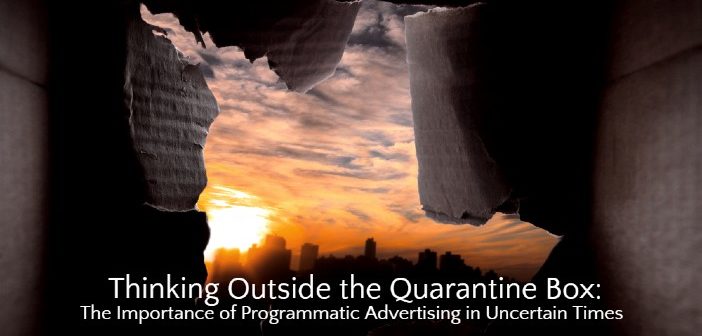Thinking Outside of the Quarantine Box: The Importance of Programmatic Advertising in Uncertain Times

Advertising is always an industry that needs to be able to turn on a dime in response to current events, cultural moods, product breakthroughs, economic shifts, and more. For traditional Out-of-Home (OOH) advertising, which depended on physical billboards and signage, the ability to reassess and make changes on the fly had been a challenge. With the advent of Digital Out-of-Home (DOOH), OOH suddenly finds itself able to pivot and respond to our shifting world better than most industry segments. One reason is that DOOH combines the advantages of OOH with the programmatic strengths of digital advertising, making it an ideal path for marketers looking to get their message out in turbulent times. Let’s take a look at how OOH functioned before and after the introduction of programmatic buying, and how DOOH can make a big impact for marketers even (and especially) in times of turmoil.
Historically, when options for OOH were static, like painted billboards or set posters in subway cars, an event like COVID-19 could be disastrous for a campaign. Imagine a static billboard for noise-cancelling headphones posted in the drive-up area of an airport. Suddenly, with coronavirus quarantines, both the message and the location of the billboard may be out of date and bleeding budget; no one is flying much these days, so they’re neither exposed to the billboard nor interested in how noise cancellation can help them sleep on a flight next to a talkative stranger. The creative would be wasted, and the purchase of a set amount of time on that billboard would be a sunk cost.
Now with DOOH, which includes all manner of dynamic out-of-home properties, from large screens (think Times Square) to televisions in the back seats of taxis, marketers can shift both their messaging and targeting agilely. That same brand could shift its campaign to be about getting work done in a house suddenly full of fellow-quarantined family members, and move it from the airport lot to gas station pumps (people are still driving and refueling). Additionally, ads could be placed on screens outside major grocery stores, which consumers are still frequenting, with messaging around listening to favorite podcasts while standing six feet apart from your nearest co-shopper.
Furthermore, because DOOH can be tied to mobile geo location, brands can easily identify and react to target their shoppers as consumers begin to emerge from quarantine in certain areas. Programmatic buying, combined with geo location, allows DOOH marketers to tailor their messaging and targeting right down to the weather.
In this way, DOOH is poised to shift and offer valuable information to consumers even now by meeting them where they are, like grocery stores, gas stations, and pharmacies. DOOH could also recover more quickly from the COVID-19 economic dip than other advertising segments because of the ability to place revamped messaging in new markets immediately when there is a shift in consumer movement. Traditional mediums are less adaptable and take more time and expense to adjust.
So, while there is no doubt that these are trying times on multiple levels, there is reason to be optimistic about OOH’s potential to reach consumers, both during the COVID-19 crisis and during its recovery, thanks to its newly implemented programmatic capabilities.
Source: RAN BEN YAIR

